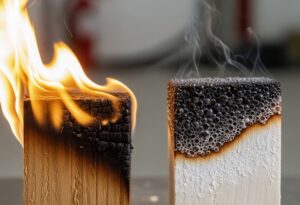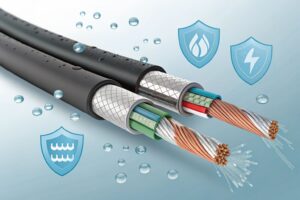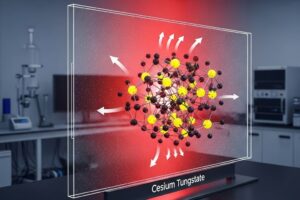What is polyester monofilament?
A polyester monofilament (often PET) is a continuous, single fiber. Monofilaments are stronger and more rigid than multi-stranded fibres. Polyester monofilaments, widely used in consumer and industrial applications, are known for their outstanding mechanical properties, chemical resistance and abrasion resistance.
Applications of polyester monofilament
- Industrial nets : such as nets for paper machines, nets for papermaking, screening nets and conveyor belts.
See more about Application of anti-hydrolysis agent in PET polyester monofilament for paper making clothing industry
- fishing nets or nets for other marine equipment.
- Filtering Materials: liquid, gas and solid filtration.
- Industrial ropes and cable for high-strength applications.
- Medical devices, such as surgical sutures or catheters.
- 3D printing used to manufacture 3D-printing materials.
Methods to improve the chemical stability of monofilaments
Use of additives
- Anti-hydrolysis Agents: These agents stop polyester monofilaments hydrolyzing when exposed to humid environments. They extend the service life of these monofilaments. see more about (what is anti-hydrolysis agent)
- Antioxidants : These additives improve the thermal stability of polyester monofilaments and prevent degradation under oxidizing conditions.
- Light stabilizers are available to absorb or reflect UV rays, and they can also prevent the degradation of polyester monofilaments.
surface treatment
- Coating Technology: By coating polyester monofilaments in protective materials such as fluoride, silicone or polyurethane on the surface, you can improve their chemical resistance and weathering resistance.
- Plasma treatment: A dense protective layer forms on the surface monofilament using plasma treatment technology, which enhances its chemical stability.
Modified copolymers
Copolymerization Modification: In the production of polyester monofilament the addition of other monomers to copolymerization modifications, such as adding hydrolysis resistant monomers, can improve its hydrolysis resistence.
Blending modification: By blending other polymer materials with polyester monofilament to increase its chemical resistance. Blending with polyamide or PTFE is an example.
Synthesis process improvement
Optimisation of polymerization: Adjustment of polymerization conditions, e.g. temperature, pressure and catalyst. This can be used to produce polyester monofilaments that have a higher chemical stability. By using more stable catalyst systems, it is possible to reduce the tendency of polyester monofilaments to hydrolyze.
Purification: Improve the purity of the raw materials, and optimize the posttreatment process in order to reduce impurities. This will improve the chemical stability of the polyester monofilament.
Environmental control
Avoid using polyester monofilament under extreme conditions (such as high temperatures, high humidity, strong acids and alkalis) over a long period of time. This can prolong its life.
Optimize storage conditions. By controlling the temperature, humidity and light during storage, you can minimize the impact of the external environment.
Cases
Industrial filters
The service life of industrial filters can be improved significantly by adding antihydrolysis and antioxidant agents to polyester monofilaments. The polyurethane is then applied to increase the chemical resistance of the filter, which allows it to perform better in harsh industrial conditions.
Fishing nets
The addition of light stabilizers to fishing nets increases the UV resistance and service life of the nets in marine environments. Adding an anti-hydrolysis substance can also prevent the hydrolysis of nets in seawater, and increase their strength and durability.
How to apply anti-hydrolysis agent into polyester monofilament?
Addition of the anti-hydrolysis agents during the polymerization: The agent is added to the polyester polymerization so that the matrix is uniformly distributed. This method guarantees the effectiveness of anti-hydrolysis agents, but compatibility with the polymerization conditions is also important.
Incorporation During Spinning: During the spinning of polyester monofilaments an anti hydrolysis masterbatch, or anti-hydrolysis powder is added to ensure a uniform distribution in the fibers of the hydrolysis inhibition. The masterbatch is an anti-hydrolyzate material that has been prefabricated and can be added easily during the spinning process.
The chemical stability of polyester monofilaments for industrial use can be improved by using the methods above. This will extend the service life of the polymers and allow them to meet different application needs.







